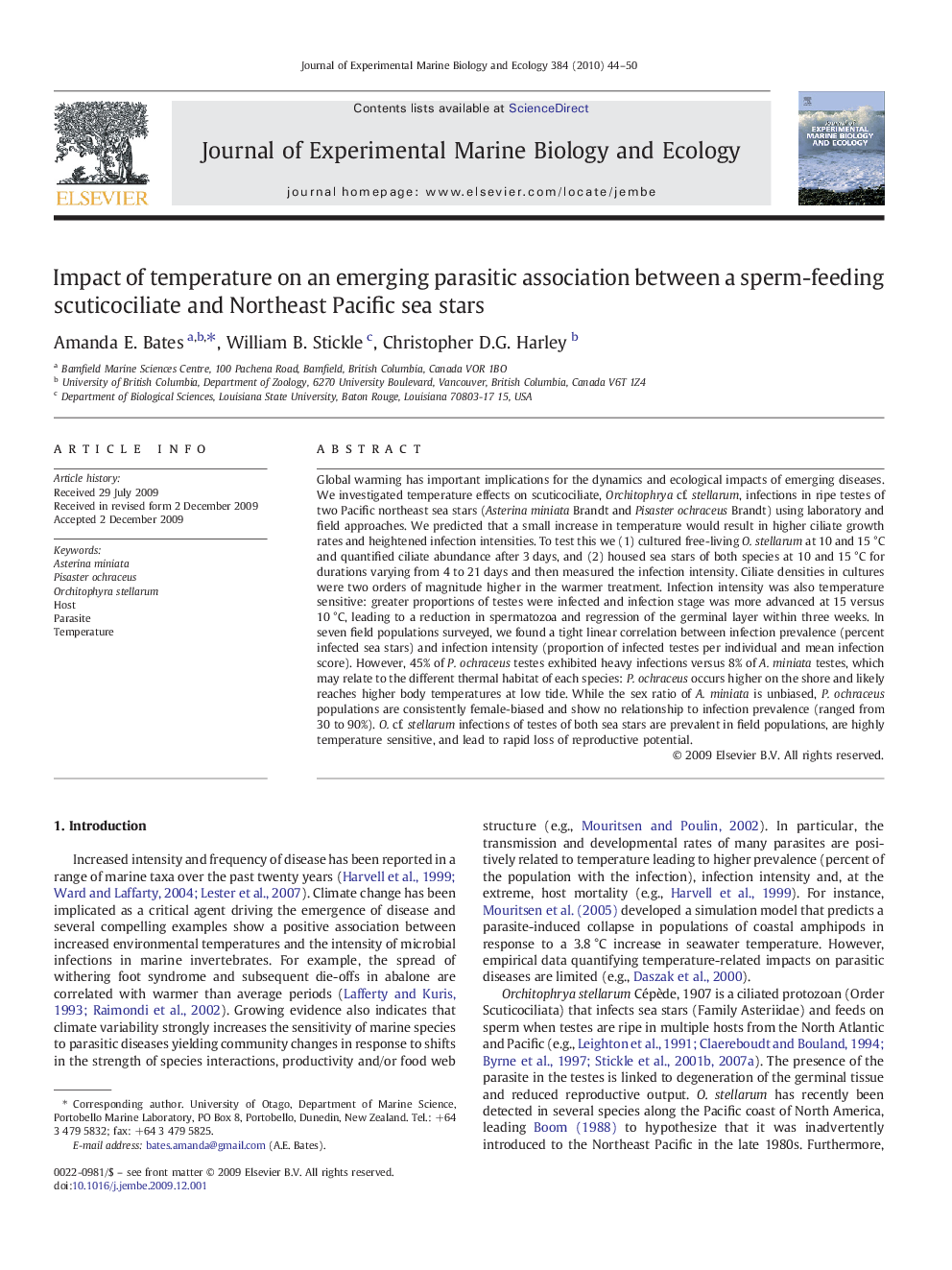| Article ID | Journal | Published Year | Pages | File Type |
|---|---|---|---|---|
| 4396640 | Journal of Experimental Marine Biology and Ecology | 2010 | 7 Pages |
Abstract
Global warming has important implications for the dynamics and ecological impacts of emerging diseases. We investigated temperature effects on scuticociliate, Orchitophrya cf. stellarum, infections in ripe testes of two Pacific northeast sea stars (Asterina miniata Brandt and Pisaster ochraceus Brandt) using laboratory and field approaches. We predicted that a small increase in temperature would result in higher ciliate growth rates and heightened infection intensities. To test this we (1) cultured free-living O. stellarum at 10 and 15 °C and quantified ciliate abundance after 3 days, and (2) housed sea stars of both species at 10 and 15 °C for durations varying from 4 to 21 days and then measured the infection intensity. Ciliate densities in cultures were two orders of magnitude higher in the warmer treatment. Infection intensity was also temperature sensitive: greater proportions of testes were infected and infection stage was more advanced at 15 versus 10 °C, leading to a reduction in spermatozoa and regression of the germinal layer within three weeks. In seven field populations surveyed, we found a tight linear correlation between infection prevalence (percent infected sea stars) and infection intensity (proportion of infected testes per individual and mean infection score). However, 45% of P. ochraceus testes exhibited heavy infections versus 8% of A. miniata testes, which may relate to the different thermal habitat of each species: P. ochraceus occurs higher on the shore and likely reaches higher body temperatures at low tide. While the sex ratio of A. miniata is unbiased, P. ochraceus populations are consistently female-biased and show no relationship to infection prevalence (ranged from 30 to 90%). O. cf. stellarum infections of testes of both sea stars are prevalent in field populations, are highly temperature sensitive, and lead to rapid loss of reproductive potential.
Related Topics
Life Sciences
Agricultural and Biological Sciences
Aquatic Science
Authors
Amanda E. Bates, William B. Stickle, Christopher D.G. Harley,
